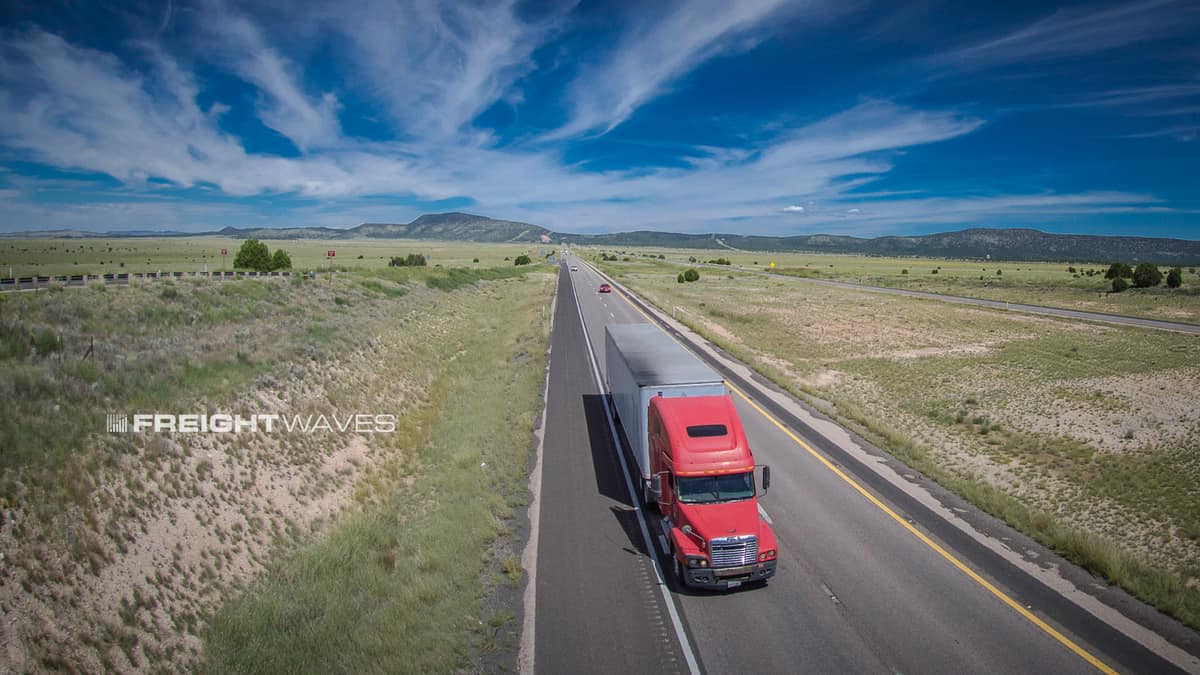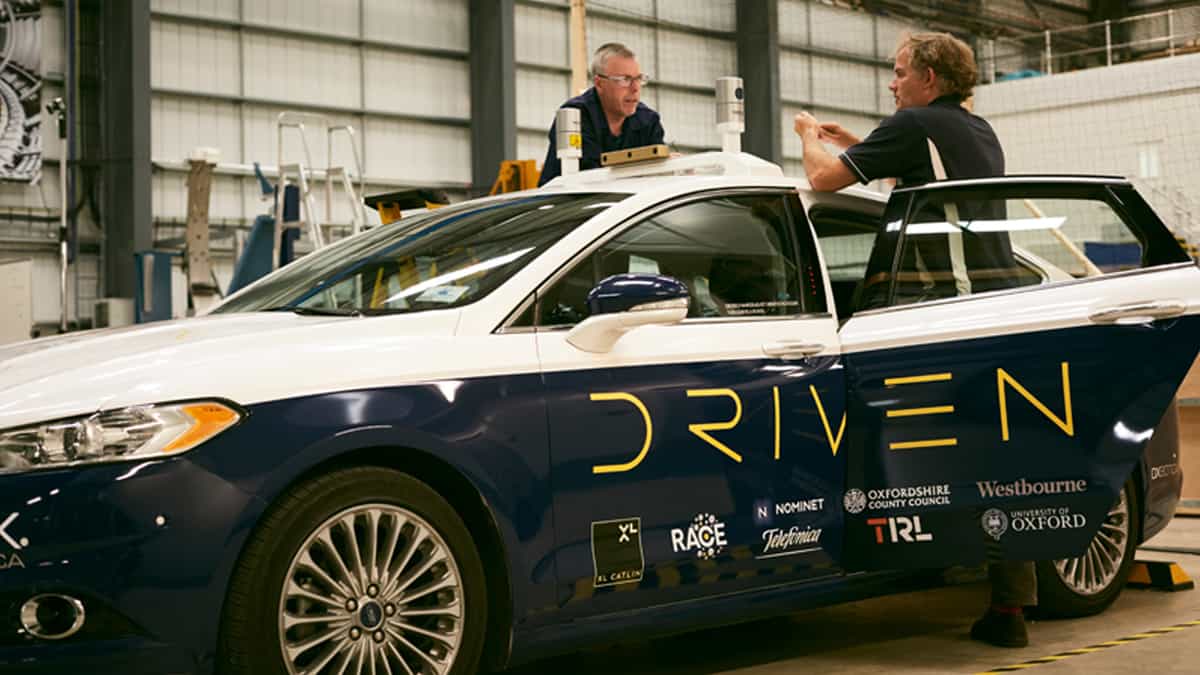
Pictured: an artist’s anthropomorphic impression of robotic workers. Cohesio’s robots, of course, do not look like this. They are small, block-like and fit under a movable stack of products. Graphic: by Shutterstock.
Körber Logistics, the investment and logistics arm of tech conglomerate Körber of Hamburg, Germany, has acquired a majority stake in the warehouse autonomous logistics robot installer and consultancy Cohesio.
FreightWaves asked Nishan Wijemanne, CEO of Cohesio, and Chad Collins, CEO of Körber Logistics Software about the acquisition. Unfortunately, neither would disclose the price paid nor the size of the equity stake taken.
Melbourne, Australia-based Cohesio is targeting the North American and Asia Pacific markets with its “autonomous mobile robotics,” which will be deployed in warehouses and distribution systems.
Goods-to-person
Wijemanne explained that Cohesio is targeting the goods-to-person segment.
There’s a big inefficiency in warehousing and that’s the problem of finding the products and goods on the shelf.
Then a picker has to get them off the shelf and then bringing them back to an appropriate person or place, such as a dispatcher at a fixed desk.
The time-consuming and expensive solution to date has been to employ human beings to wander up and down aisles in warehouses to find and bring product to a dispatch desk.
Wijemanne explained to FreightWaves how Cohesio targets this space.
“You’ve seen the robot vacuum cleaners, right? Well, they look like that. The robot goes under the stationary racking and picks up the whole rack. It brings the product to the operator, who takes the package and the rack is taken away,” Wijemanne said.
Amazon and Kiva Systems
If that sounds familiar, it’s probably because online retail giant Amazon some years ago adopted what appears to be a very similar system.
Amazon bought Kiva Systems for a vast amount of cash, reportedly in the region of about US$775 million back in 2012. Allowing for inflation between 2012 and 2019 and that $775 million is worth about US$866 million now.
According to Wijemanne, Kiva originally planned to take its robotics and systems to the distribution center market; however, it appears that the online giant rebranded Kiva as Amazon Robotics and kept the technology for itself.
That has created a market gap for companies like Cohesio. And there are a lot of companies in this space.
Consultancy and understanding are key
Wijemanne argued that Cohesio’s strength doesn’t lay so much in the nature of the technology but rather in the understanding, consultancy and support that it can offer its customers.
“Robots are robots. It’s really about workflow and understanding the customer’s business. We design workflow optimization, such as how to position the racks. … Consultancy and discovery is key,” said Wijemanne, adding that customers can’t just call and have the system installed.
“We go through discovery with customers. We need to understand the customer and the challenges. We have a number of consultants on the team that can go through the process.”
Although robots replace humans in the task of finding and bringing product to, say, a dispatch desk, as Wijemanne pointed out, human beings don’t lose their jobs when the Cohesio system is installed.
Jobs are not lost
“No one really loses their job. It’s the opposite — we help people up-skill to work with automation and we develop a high-value proposition.”
He gave the example of luxury fast-moving consumer goods, such as handbags. Pickers stop wandering around the aisles of a warehouse and, instead, are employed to spend time adding value with further touches to the end product such as extra luxury packaging or spraying the handbag with perfume.
The value added, Wijemanne explained, is that it helps online retailers to make the delivery and opening of a package an “experience,” which the online consumer can miss out on when compared to the in-store shopper.
Autonomous robots
The robots are autonomous. Cohesio fences off a designated space for safety purposes and the robots drive around in that space by themselves. They use QR codes to help with navigation. They also have an array of sensors, which means they can detect other robots and people in front of them and will stop if necessary.
They also are programmed to run at between 100% to 80% of power reserves and, when they get to the trigger point, will “go and charge themselves,” Wijemanne said, adding that the company will carry out preventive and regular maintenance as part of a service contract.
There are cost benefits from having robots do a job that humans would otherwise do. Not having to pay wages is an obvious benefit, as is the fact that robots will pick greater volumes of product faster and more accurately.
Scalable and relocatable
There are other savings too. As Cohesio’s system is flexible, mobile and modular, it is relatively quick and easy to install — and also to dismantle. If a business needs to relocate, then the Cohesio system can be packed up and trucked to its new home. It’s also scalable.
And there’s also the potential to save on distribution center space and associated logistics costs, such as trucking. Wijemanne said he’s aware of one system in the Philippines that is deployed over three levels.
“Distribution centers tend to be further out from CBDs [central business districts] and some customers are talking about putting them in stores,” he told FreightWaves.
There’s an artificial intelligence element and the system generates data for the purposes of business intelligence analysis. Cohesio also helps to connect data systems.
“There’s more to it than shipping more product more quickly,” Wijemanne said, adding that optimal benefits depend upon why a customer is using the technology.
Costs and pricing
Working out comparative prices is tricky as exact prices will vary depending upon a wide range of factors, such as customer throughput.
Wijemanne gave a rough ballpark example that if a fixed system (conveyors and racks fixed to the floors and walls and so on) would cost, say US$20 million, then the Cohesio system can be installed for US$1 million to US$5 million.
“It’s a very different value proposition,” Wijemanne told FreightWaves.
Market by market
Sectors being targeted by Cohesio include retail and e-commerce. Wijemanne added that third-party logistics operators are “coming onboard too.”
Geographically, the U.S. and Europe have been the biggest markets, but Wijemanne said the company is seeing a lot of traction in Australia, New Zealand and Southeast Asia.
“There’s lots of technology going into Thailand despite labor costs being cheap. Sometimes low labor costs mean [management] tries to throw people at it, but that’s not always the best solution,” Wijemanne said.
Labor is the big pressure in the distribution and supply chain
Collins, the CEO of Körber Logistics Software, explained to FreightWaves the attraction of Cohesio’s system.
“The big pressure we see is labor in the distribution center and the supply chain. Labor costs are increasing in all parts of the globe. Fewer people are willing to do this work. Companies are looking at doing more with software or mechanical solutions,” he said.
He pointed out that companies can, literally, pay hundreds of millions of dollars for installation of a fixed system, whereas robots are cheaper, more flexible and keep costs down. He added that robots may work in parallel to fixed high capital systems but they are replacing humans during peak season demand for labor.
Looking forward, Collins sees “tremendous growth” for logistics robots in e-commerce and Asia.
Collins said that Asia has “very dense” cities and there is a need for speedy deliveries for the last mile, which will drive demand for logistics solutions that can take place in CBDs.
Meanwhile, in the U.S. the markets have been manually focused. However, “robots will be a way to shift into mechanical,” he said.



















